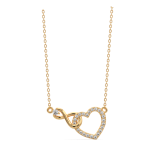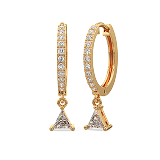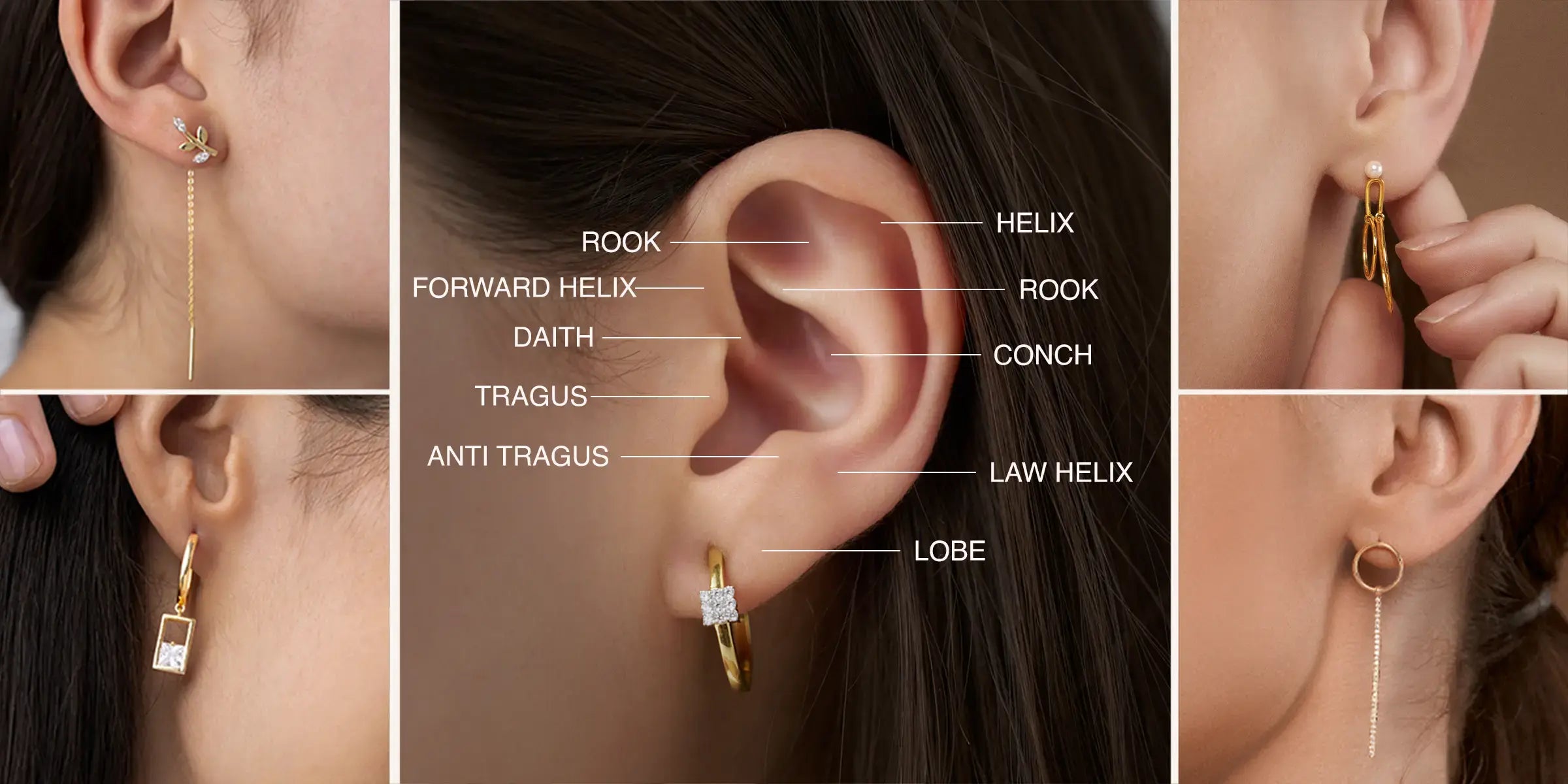Amazing Benefits of Ear Piercing (Women & Men) – Astrological, Spiritual, Health and Scientific
Ear piercing isn’t just a fashion trend; it’s an age-old tradition with rich meanings across various cultures. For both females and males, ear piercing has represented beauty, maturity, spirituality, and even social status. From tribal rituals in Africa to the Karnavedha ceremony in India, the practice holds both symbolic and practical value.
Historical Evolution of Ear Piercing
Ear piercing dates back over 5,000 years. Ancient Egyptian mummies were found with pierced ears. In many civilisations, it marked rites of passage, religious duty, or warrior status. Greeks and Romans adorned themselves with gold earrings, while in India, it was a spiritual practice linked to cosmic energy.
Ear Piercing as a Unisex Tradition
Despite some modern stigmas, both men and women historically embraced ear piercing. In tribal communities, pierced ears on men indicated bravery or lineage. Today, the fashion industry is reviving this unisex legacy with style and elegance.
Astrological Benefits
Astrology emphasises that the human body is aligned with celestial patterns. Ear piercing, according to Vedic astrology, helps regulate energy flow in the body.
Planetary Influences on the Human Body
Different body parts correspond to planets. The ears are often linked to the Moon, governing emotions and mental clarity. Piercing stimulates lunar energy, believed to enhance calmness and focus.
Why the Left and Right Ear Matter
In many traditions, the left ear is associated with feminine energy (Yin) and the right with masculine energy (Yang). Astrologers often recommend ear piercing based on your dominant planetary influence or dosha.
Zodiac Signs and Ideal Piercing Timing
For each zodiac sign, certain days and planetary hours (Hora) are ideal for ear piercing. For example, Taurus and Libra, ruled by Venus, benefit greatly from wearing gold in their ears.
Spiritual Benefits
Ear piercing activates key spiritual points on the body that promote mindfulness and inner balance.
Awakening Inner Energy Points
The earlobes are considered minor marma (vital) points in Ayurveda. Piercing them helps awaken subtle energy, improving vitality and connection to higher consciousness.
Chakra Alignment Through Piercings
Though ears don’t contain the main chakras, they influence the Ajna (Third Eye) and Sahasrara (Crown) chakras indirectly. Stimulating the earlobe balances intuition and mental clarity.
Traditional Beliefs in Hinduism, Buddhism, and Chinese Medicine
In Hinduism, Karnavedha (ear-piercing ceremony) is a rite of purification. Buddhist monks often pierce their ears to represent renunciation. Chinese medicine believes ear piercing regulates chi (life energy) and improves organ health.
Health Benefits
Beyond the spiritual, ear piercing is surprisingly beneficial to your physical health when done correctly.
Acupressure Points in the Earlobe
The earlobes contain acupressure points linked to the eyes, reproductive organs, and brain. Regular wear of earrings stimulates these zones, promoting wellness.
Ear Piercing and Mental Clarity
Piercing the ears, especially the lobe, can improve mental balance and help with anxiety, particularly in children. Some believe it reduces excessive talkativeness and increases focus.
Boosting Immune and Reproductive Health
Ayurveda suggests ear piercing in young girls helps regulate menstrual cycles later in life. In boys, it’s believed to support testicular development and hormonal balance.
Scientific Explanation Behind Ear Piercing
Science, too, sheds light on the bodily reactions to ear piercing.
Neurophysiological Stimulation
Piercing stimulates nerve endings, improving sensory pathways between the ears and the brain. This can potentially sharpen hearing and response times.
Endorphin Release and Pain Threshold
The process of piercing releases endorphins, a natural painkiller. This helps people, especially children, develop higher pain thresholds and better stress responses.
Brain Development and Ear Lobe Piercing in Children
In traditional Indian medicine, early ear piercing is thought to stimulate areas in the brain responsible for speech and language development.
Cultural Significance Around the World
From sacred rituals to modern-day fashion, ear piercing holds different meanings globally.
Indian Karnavedha Ceremony
A sacred Hindu rite performed between ages 1–5, it marks spiritual awakening and cultural belonging.
African and Tribal Traditions
In Africa, ear stretching or piercing denotes tribal affiliation, bravery, or marital status. It’s both decorative and deeply symbolic.
Western Style & Symbolism
In the West, ear piercing surged in the 1960s and 70s as a symbol of rebellion, identity, and style. Today, it’s widely accepted and celebrated.
Psychological and Emotional Benefits
Ear piercing doesn’t just change your look; it can positively impact your mind and emotions.
Building Confidence and Identity
For many, the act of piercing is empowering, a form of reclaiming bodily autonomy and enhancing self-image.
Ear Piercing as a Self-Expression Tool
Each piercing and jewellery choice tells a story, whether you opt for subtle studs or bold hoops.
Impact on Mood and Well-Being
Just like a new haircut can boost confidence, new earrings can lift your mood and spark joy.
Differences in Male vs. Female Ear Piercing
Societal Perceptions
While more common in women, male ear piercing is on the rise, challenging outdated gender norms.
Symbolic Representations
For men, it can represent boldness or individuality; for women, grace and tradition.
Fashion and Gender Identity
Ear piercings today transcend gender, offering everyone a canvas for personal style.
Common Myths and Misconceptions
Does Ear Piercing Really Affect Eyesight?
Though widely believed in Ayurveda, scientific evidence is limited. However, stimulating pressure points may help with eye strain.
Male Ear Piercing and Masculinity
It’s a myth that earrings diminish masculinity. In many cultures, they symbolise strength and status.
Piercing and Superstitions
Some cultures link piercings to evil eye protection or warding off negative energy, though this is largely symbolic.
Best Age and Time for Piercing Based on Beliefs
Ayurveda and Ideal Age
Experts recommend piercing between 6–12 months for optimal health benefits.
Astrology and Auspicious Dates
Piercings during waxing moon phases (Shukla Paksha) and on Friday or Monday are considered ideal.
Pediatric and Medical Advice
Modern doctors also support early piercing for better healing and minimal trauma.
Choosing the Right Metal for Earrings
Importance of Hypoallergenic Materials
To avoid irritation or allergies, metals like surgical steel, platinum, or gold vermeil are safest.
Gold vs. Silver vs. Stainless Steel
Gold is known to retain spiritual energy; silver cools the body. Stainless steel is affordable but lacks spiritual depth.
Energy Conductivity of Precious Metals
Gold is believed to attract positive energy and repel negativity, making it ideal for spiritual balance.
Why Choose KYMEE’s 18k Gold Vermeil Earrings
What is Gold Vermeil and Why It’s Superior
KYMEE’s 18k gold vermeil earrings are made with a thick layer of 18k gold over 925 sterling silver, offering luxury and durability at an accessible price.
Hypoallergenic and Long-Lasting Quality
These earrings are free from nickel and other harsh alloys, making them safe for sensitive ears. They also resist tarnishing better than standard gold-plated jewellery.
Perfect Blend of Spiritual and Aesthetic Value
Gold aligns with astrological and Ayurvedic principles, and KYMEE's designs bring timeless elegance, making them a perfect gift for spiritual seekers and fashion lovers alike.
Piercing Safety, Hygiene, and Aftercare Tips
Choosing a Certified Professional
Always opt for certified piercers using sterilised equipment to prevent infections.
Aftercare for Fast Healing
Clean your ears twice a day with saline solution. Avoid touching with dirty hands and rotate them gently.
Preventing Infections and Keloids
Use hypoallergenic earrings and avoid removing them too early. If irritation persists, consult a dermatologist.
Best Piercing Styles for Men and Women
Minimalist Studs and Bold Hoops
Studs offer elegance; hoops bring drama. Choose based on your face shape and personality.
Cultural and Modern Styling Ideas
Go traditional with jhumkas or edgy with barbell and helix piercings.
Ear Stacking Trends
Combine lobe, tragus, and conch piercings with dainty KYMEE studs for a fashionable layered look.
Conclusion
Ear piercing is more than body art; it’s a bridge between ancient wisdom and modern wellness. Whether you're drawn by tradition, science, or style, piercing your ears can offer a host of benefits for both males and females. And when paired with KYMEE's 18k Gold Vermeil Earrings, you’re not just wearing jewellery, you’re wearing wellness, tradition, and timeless elegance.
FAQs
1. Is ear piercing painful?
Pain is minimal and brief, especially when done by professionals using sterilised equipment.
2. Are there any health risks associated with ear piercing?
With proper care and hygiene, risks are minimal. Use hypoallergenic earrings to avoid allergies.
3. At what age should children get their ears pierced?
Ideally, between 6–12 months, when healing is faster and trauma is lower.
4. Can boys also get ear piercings for spiritual reasons?
Yes! In Ayurveda and astrology, boys benefit equally from energy flow stimulation.
5. What metals are best for newly pierced ears?
Gold vermeil, 14k/18k gold, surgical steel, and titanium are best for new piercings.
6. Why choose KYMEE's 18k Gold Vermeil Earrings?
They are elegant, hypoallergenic, spiritually beneficial, and built to last, ideal for both health and style.
7. What are the benefits of both ear piercings for males?
- Style/Expression: Enhances personal style and can make a bold fashion statement.
- Balanced Look: Provides symmetry and a balanced appearance.
- Versatility: Allows for mixing and matching of different jewellery styles.
8. What are the benefits of a helix ear piercing?
- Trendiness: Popular and stylish, it gives a modern, edgy look.
- Customizable: Can be paired with other piercings for a unique style.
- Appeal: Works well with various haircuts and looks.
9. What are the benefits of an earlobe piercing?
- Classic: Timeless and easy to wear.
- Simple Care: Easier to heal and maintain compared to other piercings.
- Popular: Most common piercing, so it's socially accepted everywhere.
10. What are the benefits of a tragus ear piercing?
- Unique: Less common, so it stands out.
- Stylish: Adds a bold and edgy touch to your look.
- Functionality: Can be used to enhance other ear piercings.
11. What are the benefits of an upper lobe ear piercing for females?
- Additional Style: Adds a chic touch to the classic lobe piercing.
- Flexible: Works with a variety of jewellery options like hoops and studs.
- Subtle but Trendy: A more delicate yet fashionable choice.
12. What are the benefits of a side ear piercing for females?
- Bold Statement: Gives a distinctive, eye-catching look.
- Unique Positioning: Stands out because it's placed on the side of the ear.
- Customizable: Can be mixed with other piercings for extra flair.
13. What are the benefits of an upper ear piercing?
- Aesthetic Appeal: Adds a refined, fashionable edge.
- Versatile: Perfect for combining with other piercings for a layered look.
- Minimal Pain: Generally less painful than cartilage piercings like the helix.
14. Is Ear Piercing Good for Anxiety?
Possibly: For some, ear piercings can have a calming effect by providing a sense of control over their appearance. However, it varies from person to person.
15. Does Virat Kohli Have Piercings?
Yes: Virat Kohli has a couple of ear piercings, which he’s seen wearing with stylish studs.
16. What Do the Vedas Say About Ear Piercing?
Cultural Tradition: In Hinduism, ear piercing (like the "Karnavedha" ritual) is considered auspicious and is believed to improve spiritual and physical well-being.
17. What to Avoid After Ear Piercing?
- Avoid touching: Don’t touch with dirty hands.
- Avoid swimming: Stay out of pools, lakes, or oceans.
- Avoid tight jewellery: Make sure jewellery is not too tight or irritating.
18. Who Should Not Pierce Ears?
- Those with skin conditions: People with infections, rashes, or allergies should avoid piercings.
- People with weakened immune systems: Higher risk of infection.
19. Does an Ear Piercing Bring Good Luck?
In some cultures, yes, it's believed to bring good fortune and protection, especially in Hindu and other traditional cultures.
20. What Is the 3-2 Rule for Piercings?
Healing Time: For most ear piercings, it’s recommended to change the jewellery after 3 months for lobe piercings, and after 6 months for cartilage piercings. But always consult a professional.
21. How to Heal an Ear Piercing Faster?
- Keep it clean: Use saline solution or piercing aftercare spray.
- Avoid irritation: Don’t twist or touch the piercing.
- Avoid tight jewellery: Ensure the jewellery is not causing pressure.
 Best Seller
Best Seller
 New In
New In
 Necklaces
Necklaces
 Rings
Rings
 Bracelets
Bracelets
 Earrings
Earrings
 Personalized
Personalized
 Mangalsutra
Mangalsutra




































